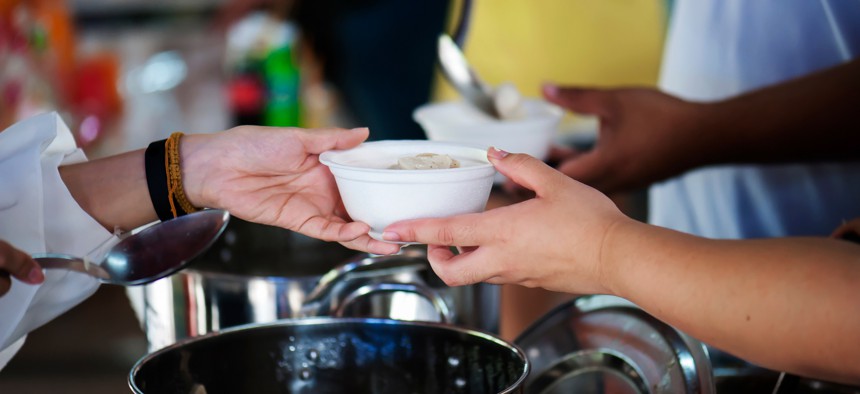Federal food aid’s winding roads to New York

Person handing cup of food. Shutterstock
Local and state officials in New York have been funding emergency food relief initiatives and charities as food insecurity worries continue during the COVID-19 pandemic. And among the most effective hunger-relief strategies, advocates say, are those spearheaded by the federal government.
But some recent federal efforts to combat growing food insecurity haven’t been distributed equally. A new emergency program created in mid-March by Congress, Pandemic-EBT, has been accessible to only some of the 30 million children it was created to help, according to the New York Times. All New York City public school students will receive $420 to help account for losing out on free meals they would normally get at school through the program. While 16 other states have yet to get federal approval for doling out payments, New York has been set to start sending funds in late May. But the program won’t reach every student in New York state until July.
Another food relief program operated under the U.S. Department of Agriculture has also provided less funding toward New York and other northeastern states compared with other parts of the country. The region is getting about 4% of those federal dollars despite having a third of the country’s coronavirus cases and 10% of its population.
The disparities arose from the decision to fund private contractors responsible for distributing food, according to the federal agency, who can’t as easily reach food banks in the region.
“We could have had more food sooner – and they could have guaranteed more geographic representation across the nation – if the program had been designed around food banks and not around distributors,” Mitch Gruber, chief strategy officer at the food bank Foodlink in Rochester, told ProPublica.
